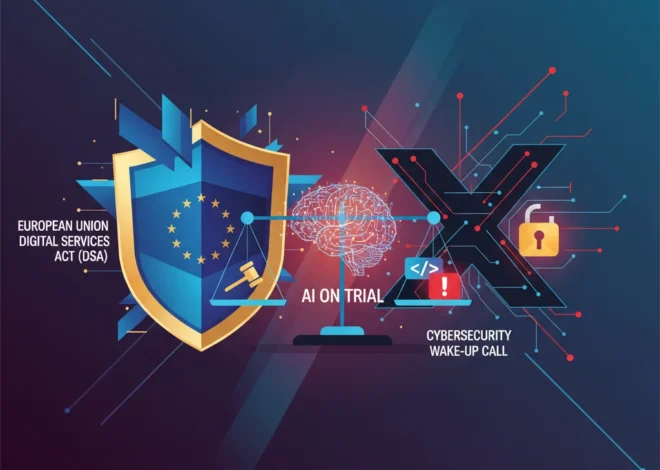
When Code Becomes the Accuser: The BT Case and the Terrifying Fragility of Our Digital Lives
Imagine waking up one morning to find your world turned upside down. Your digital life, a tapestry woven from countless clicks, searches, and connections, has been misinterpreted. A system designed to protect has instead pointed its finger directly at you, accusing you of a heinous crime you didn’t commit. This isn’t the plot of a dystopian thriller; it was the harrowing reality for three innocent people in the UK.
A recent tribunal revealed that a technical mistake by British Telecommunications (BT), one of the UK’s largest internet service providers, led to these individuals being wrongly accused of accessing child abuse images. The consequences, as a judge noted, were nothing short of “distressing and far-reaching.” This case is more than just a shocking headline; it’s a canary in the coal mine for our increasingly automated and data-driven world. It serves as a critical wake-up call for everyone in the tech industry—from the junior developer programming a simple logging function to the CEO of a major SaaS startup.
This single, catastrophic error peels back the curtain on the hidden fragility of our digital infrastructure. It forces us to confront an uncomfortable truth: the data we believe to be objective and absolute is often anything but. And as we race to build more sophisticated systems powered by artificial intelligence and machine learning, the foundational integrity of that data becomes the most critical—and potentially weakest—link in the entire chain.
The Anatomy of a Digital Nightmare: What Does “Wires Crossed” Really Mean?
The phrase “getting wires crossed” evokes an old-timey image of a switchboard operator manually connecting the wrong physical lines. In today’s hyper-connected world of cloud computing and fiber optics, the reality is far more abstract and, arguably, more dangerous. The error wasn’t in a physical wire; it was in the data. The “wires” that got crossed were lines of code, database entries, and server logs.
When you go online, your Internet Service Provider (ISP) like BT assigns your device a unique identifier for that session: an IP address. Law enforcement agencies rely on this digital address to trace illicit online activity back to a specific household or individual. For decades, this has been a cornerstone of digital forensics. But the BT case demonstrates a catastrophic failure in this fundamental process. The investigation likely began with an illicit IP address, which was then traced back to BT’s network. When authorities requested the customer information associated with that IP address at that specific time, BT’s system provided the wrong details.
Several technical scenarios could have led to this failure:
- IP Address Logging Errors: The most likely culprit. The software responsible for logging which customer is assigned which IP address at what time could have contained a bug, leading to incorrect data being stored. A simple off-by-one error in programming or a database corruption could have devastating real-world impact.
- Carrier-Grade NAT (CGNAT) Complications: Many ISPs now use CGNAT to conserve a dwindling supply of IPv4 addresses. This means multiple customers share a single public IP address, with the ISP’s internal network keeping track of who is doing what. As the Electronic Frontier Foundation explains, this process adds immense complexity and a significant margin for error when it comes to accurately identifying a single user.
- Database Desynchronization: The systems that assign IPs and the databases that store customer records might have temporarily fallen out of sync, leading to a misattribution that was captured in the logs.
Regardless of the specific technical cause, the outcome was the same: the system’s data pointed to an innocent person. This is the digital equivalent of finding the wrong fingerprints at a crime scene—only these digital “fingerprints” are often treated as infallible truth by investigators and the legal system.
The Billion Crypto Seizure: How AI and Cybersecurity Are Crushing Digital Crime Empires
The Perilous Path of Digital Evidence
This incident brutally highlights the precarious nature of the digital evidence chain. We often assume data flows cleanly from user to ISP to law enforcement, but each step is a potential point of failure. The process is far more complex than a simple lookup.
To illustrate the vulnerabilities, let’s look at a simplified version of the digital evidence chain and where things can go wrong:
| Stage in the Evidence Chain | Potential Points of Failure |
|---|---|
| 1. User Activity | Malware, spoofing, or a compromised home Wi-Fi network could mean the activity didn’t originate from the homeowner. |
| 2. ISP Data Logging | (The BT Failure Point) Software bugs, database errors, CGNAT complexity, or incorrect timestamps lead to misattribution of an IP address to the wrong customer. |
| 3. Data Preservation & Retrieval | Improper data handling, corruption during retrieval, or misinterpretation of data retention policies can alter or invalidate the evidence. |
| 4. Law Enforcement Request | A request with an incorrect timestamp or a misunderstanding of how the ISP’s logging works can lead to the wrong data being provided. |
| 5. Interpretation & Action | Over-reliance on the perceived infallibility of ISP data without sufficient corroborating evidence can lead to wrongful investigation and accusation. |
The trust we place in each link of this chain is immense. For startups and established tech companies alike, this table should be a sobering reminder. Whether you’re building a SaaS platform that logs user activity or a cybersecurity tool that flags malicious IPs, the integrity of your data logging is not just a technical requirement—it’s an ethical imperative.
The AI Magnification Effect: Garbage In, Gospel Out
While the BT error appears to be a “classic” data management failure, it provides a chilling preview of the challenges we face in the age of artificial intelligence. The foundational principle of machine learning is often summarized as “Garbage In, Garbage Out” (GIGO). An AI model is only as good as the data it’s trained on and the data it analyzes.
Now, imagine a future scenario where law enforcement doesn’t just request IP logs but feeds this data into a sophisticated AI-driven threat analysis platform. This is not science fiction; such systems are in development and deployment across various sectors, especially in cybersecurity. This AI could be tasked with identifying patterns, predicting future threats, and even assigning “risk scores” to individuals based on their digital footprint.
If the input data—the IP address log from an ISP—is fundamentally wrong, the AI won’t just replicate the error; it will magnify and legitimize it. The AI’s output, cloaked in the authority of complex algorithms and computational power, would present the wrongful accusation as a high-confidence, data-driven conclusion. The “distressing and far-reaching” consequences of the BT error would be amplified a thousandfold. A study from the AI Now Institute has repeatedly warned about the dangers of using flawed data in AI systems for social services and justice, noting that it can “reproduce and amplify existing structural inequalities.”
This is a critical lesson for the tech community. The race for innovation cannot come at the expense of diligence. For every team working on a new ML model, there must be a parallel effort focused on data provenance, integrity, and verification. The `if-then` logic of simple programming has evolved into the probabilistic, often opaque, reasoning of AI. This demands a far higher standard of care for the data that fuels it.
ChatGPT Unchained: Why OpenAI's New Stance on Erotica is a Defining Moment for AI
Building a More Resilient and Just Digital Future: An Action Plan
The BT case is not a reason to abandon technology, but it is a powerful mandate to build it better. The responsibility is shared across the entire tech ecosystem.
For Developers and Software Engineers:
Your code is not an abstraction. It has real-world consequences. Prioritize robust error checking, redundant logging, and comprehensive testing, especially for systems that handle user identification and activity data. Treat data integrity as a primary feature, not an afterthought. The principles of defensive programming—assuming that errors will happen and building safeguards to handle them—are more critical than ever.
For Startups and Entrepreneurs:
As you disrupt and innovate, consider the ethical footprint of your technology. Build transparency and accountability into your platforms from day one. If your SaaS product collects and processes user data, how do you ensure its accuracy? What are your protocols if a law enforcement request arrives? Designing for “verifiable data” can become a competitive advantage and a mark of corporate responsibility. The cost of a data integrity failure, both in financial and reputational terms, can be existential.
For Cybersecurity Professionals:
Maintain a healthy skepticism of all data, regardless of its source. In a world of increasing automation, the “human in the loop” becomes more important, not less. Your role is not just to operate the tools but to critically evaluate their output. Always seek corroboration for data points that could have a significant impact, whether it’s blacklisting an IP or flagging an account for review. As a report by KPMG on digital trust highlights, ensuring data integrity is a cornerstone of effective cybersecurity and risk management.
WPP's 0M Bet on Google AI: Is This the End of Marketing As We Know It?
Conclusion: The Ghost in the Machine is Us
The three innocent people ensnared by BT’s technical glitch are not just statistics; they are a stark reminder of the human cost of technological fallibility. Their story is a cautionary tale written in lines of code and database records. It demonstrates that the digital systems we rely on for communication, commerce, and justice are built on a foundation of data that is far more fragile than we assume.
This isn’t just BT’s problem. It’s a challenge for every company that writes software, manages a cloud server, or develops an AI. As we continue to build a world where code is law, we must ensure that the code is just, the data is true, and the systems are accountable. The ghost in the machine isn’t some malevolent AI; it’s the specter of our own unexamined errors, amplified by the powerful tools we’ve created. It is our shared responsibility to exorcise it.


